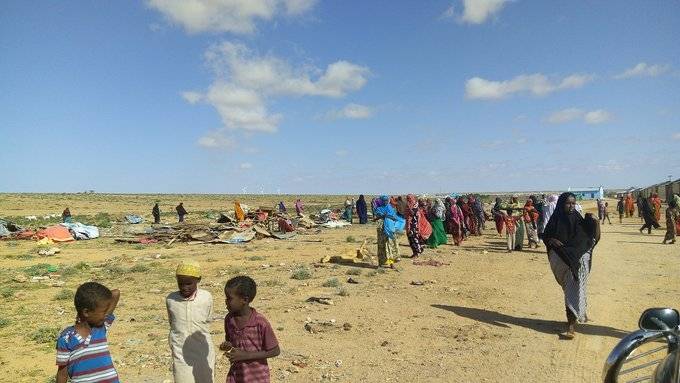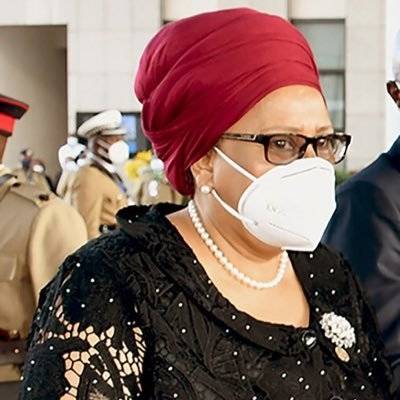Research suggests that climate change will continue to hit the Horn of Africa on multiple fronts, increasing the risk not only of prolonged drought but also of extreme heat and devastating flash floods…reports Asian Lite News
According to the United Nations, the worst famine of the twenty-first century is unfolding in the Horn of Africa. For months, a climate-change-fueled drought of historic proportions and supply chain disruptions caused by the war in Ukraine have combined to cause severe food shortages in Somalia, Ethiopia, and Kenya.
Famine experts expect the situation to deteriorate through the fall and winter. A recent report from the Food Security and Nutrition Working Group of the Intergovernmental Authority on Development, a trade block representing East African countries, found that more than 25 million people across the region could be experiencing dire food insecurity by early 2023.
“The drought this year was both the most extensive on record and the most intense on record,” Chris Funk, the director of the Climate Hazards Center at the University of California, Santa Barbara, told Grist. He said a combination of climate change and La Niña weather patterns have produced five consecutive dry seasons, which has all but destroyed the domestic food supply in Somalia and its neighboring countries.

According to the latest estimates from UNICEF, more than 7 million people in Somalia alone are already experiencing severe food shortages — around half the country’s population. That includes more than 1.5 million children under the age of five. In addition, 4.5 million Somalis are currently facing severe water shortages. More than 700 children have died in malnutrition treatment centers across the country, though experts caution that the figure is likely an undercount.
“I couldn’t get out of my head the tiny mounds of ground marking children’s graves,” UNICEF official Rania Dagash told reporters after a visit to the worst-affected areas. “I’m from this region and I’ve never seen it so bad.”
Food security experts say it’s only going to get worse from here. The Famine Early Warning System, a famine tracking program funded by the U.S. Agency for International Development, projected last week that the region’s food emergency will reach the technical definition of a famine by the end of the year, which would likely mean even more widespread death and starvation “in the absence of a significant scale-up of humanitarian food assistance.” Rainfall projections for the next month show that there will be minimal precipitation in Somalia or the other worst-affected parts of the region.
Climate change has devastated Somalia’s farming sector for the past several years. A persistent drought has caused four consecutive years of missed rainy seasons, the longest dry spell in four decades; the next rainy season is expected to be just as bad. The drought has thinned out camel herds in the north part of the country, killing off a livestock animal that provides herders with meat and milk, and devastated agriculture in the south. Meanwhile, warmer temperatures have allowed locusts to spread out across the region and chew through crops; one swarm in Kenya two years ago measured 37 miles long by 20 miles wide.
Research suggests that climate change will continue to hit the Horn of Africa on multiple fronts, increasing the risk not only of prolonged drought but also of extreme heat and devastating flash floods.
Plea for help
The UN migration agency, the International Organisation for Migration (IOM), has said it requires more than $50 million to reach 2.5 million people affected by the drought by the end of 2023.
IOM’s Deputy Director General Amy Pope, who ended a four-day visit to Mogadishu, the capital of Somalia, and Baidoa, said on Tuesday that the crisis in Somalia is deepening, noting that with the fifth failed rainy season imminent, humanitarian actors require greater resources to help communities in need survive, rebuild and foster resilience.
Pope added in a statement issued in Mogadishu that the situation in Somalia which is facing severe drought demands the world’s urgent attention, solidarity, and support.
“The communities I met are being devastated by climatic change, despite Somalia being one of the least contributors to global emissions. Millions do not have sufficient water or food. Hundreds of thousands of people could die,” she said.
According to Pope, time is running out for Somalia where rural communities are facing the dire consequences of a climate emergency as they grapple with decades of instability, disease and economic crises.
Without a rapid increase in assistance, the Somalia Food Security and Nutrition analysis which was launched last week projects that famine will be a reality in parts of the country by October.
The drought has forced more than 1 million people to leave their homes in search of water, food, and humanitarian services, according to the UN.
According to IOM, over 80 per cent of the displaced are women, children and the elderly who are bearing the brunt of the crisis, and most people have settled in towns and cities where support services are already greatly overstretched, and sanitation is poor.
The last famine in Somalia was declared just over ten years ago in 2011, which led to the death of an estimated 250,000 people.
The current drought has already claimed the lives of at least 730 children, but the true figure could be much higher, as 7.8 million people are facing extreme food shortages, the IOM said.
“Without sufficient funding, millions of people in Somalia will be left to suffer the fallout of devastating hunger, disease and displacement. The impact of this crisis will be felt by generations to come,” Pope said.
ALSO READ-OIC slams terror attack in Somalia

